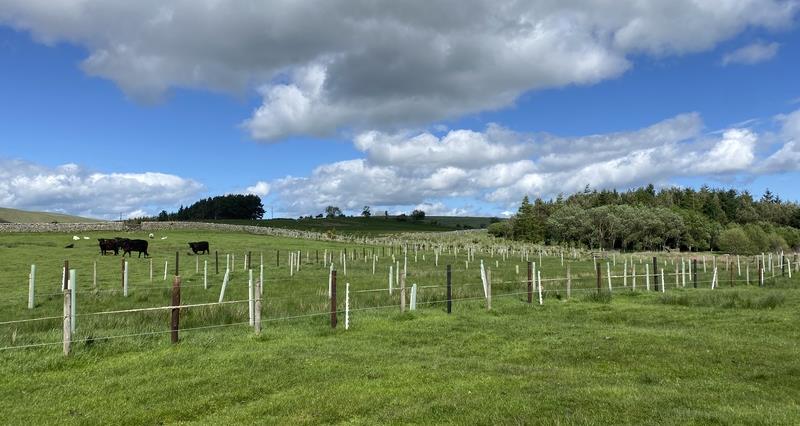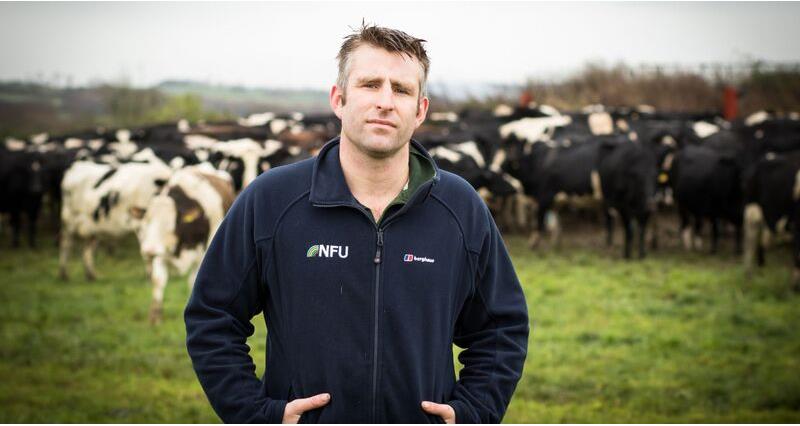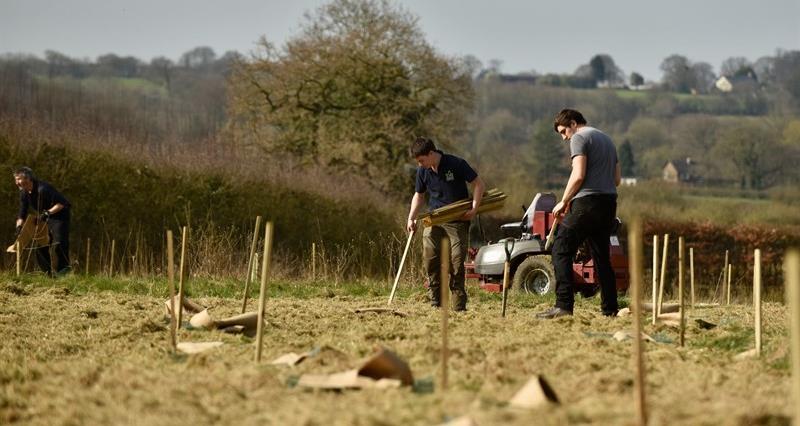Agroforestry is the concept of integrating trees into farming systems, the aim of which is to provide a range of social, environmental, and economic benefits.
From water management, carbon storage, shade and shelter, to delivering products like fruit and timber which can help diversify business income.
It is typically defined as trees in-field within cropping (silvoarable) and/or livestock (silvopasture) systems.
More broadly, agroforestry encompasses trees across the wider farmed landscape and around fields including hedgerows, shelter belts and riparian buffer strips.
The term ‘agroforestry’ has become increasingly popular, yet the practice of integrating trees into farmland is well established on many farms. Traditionally, grass in orchards would have been managed with grazing stock and/or cut for hay – this is silvopasture agroforestry.
Growing interest
Interest in agroforestry by farmers, land managers and the government is growing, but currently only 3% of the UK farmed area is in an agroforestry system.
The government has a legally binding Environment Act (2021) target to increase tree canopy and woodland cover from 14.5% to 16.5% in England by 2050; this equates to approximately 240,000 hectares.
This can include trees in the wider farm landscape such as hedges, yet it is still an ambitious target which will result in some changes to land use.
Agroforestry may therefore offer a route to help deliver an increase in tree cover which compliments food production. This would align with the government’s aim to encourage agroforestry planting on 10% of all arable land in England by 2050.
Research on agroforestry is still evolving, with some farmers undertaking their own research into agroforestry establishment, management, benefits and potential limitations.
ELMs funding
To support the government’s environmental targets and sustainable land management ambitions, a suite of agroforestry funding has been developed and introduced into the ELMs (Environment Land Management schemes).
Although some of the ELM schemes are currently closed, a few agroforestry funding options remain open. The GOV.UK funding and grants for agroforestry guidance lists the latest information on available grants.
Considerations, advice and further information
There is a lot to consider if you are thinking about planting trees and integrating them in your arable or livestock system, from a business, legal and practical point of view.
In most cases, tree planting is permanent and can therefore impact on future land use and value, taxation and tenancy agreements. It is important to get professional business and legal advice.
There are 10 new Forestry Commission AFWOs (Agroforestry Woodland Officers) across England to provide practical advice and guidance on agroforestry and how to progress an application.
Please contact [email protected] for support, providing an address and postcode to enable the Forestry Commission to direct agroforestry enquiries to your local AFWO.
A forestry or agricultural EIA (Environment Impact Assessment) may be required before establishing the trees. This would mainly impact higher density planting or when agroforestry would increase the agricultural productivity of cultivated land or semi-natural areas. An AFWO would be able to advise on if this is required.
The right tree needs to be planted in the right place and in the right way for it to successfully establish and work for the wider farm business.
Forest Research and the University of Reading have designed a tree species guide for UK agroforestry systems. It has been created to provide an overview of tree species attributes (beneficial or detrimental) to help inform agroforestry decisions.
The government has produced a guide to agroforestry and a Forestry Commission blog which explores if agroforestry is right for your farm.
Farmer stories
See how other farmers are integrating trees into their farming systems.




